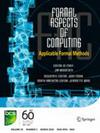Review of Formal Methods: An Appetizer
IF 1.4
4区 计算机科学
Q3 COMPUTER SCIENCE, SOFTWARE ENGINEERING
引用次数: 0
Abstract
Programming is still mostly undisciplined, 45 years after Edsger Dijkstra’s “A Discipline of Programming” [1]. For sure, in critical areas, like aerospace, communications, and silicon fabrication, rigorous approached are standard. But the vast majority of the software that underpins all aspects of everyday life is still crafted by one or more hands, with assurance given by design, inspection, and testing, rather than proof or refinement from a formal specification. There are lots of reasons for this, but, most important, hand crafted software works. Certainly, set against how utterly dependent we now are on software, the number of people who have died as a direct result of failure is vanishingly small. Long may this continue. But, by analogy with other engineering professions, it will take a major disaster to make formal software design and validation mandatory, most likely driven by a legal requirement for practitioner indemnity insurance. Thus, facility with formality is rarely a prerequisite for employment. This is really unfortunate: a demonstrable understanding of foundations should give reassurance of competence at practical programming. Thankfully, most Computer Science programmes include discrete mathematics and computability theory, often alongside declarative programming. Formality may be challenging, but it need not be hard. I have long admired the Nielsons’ pedagogy of presenting formal material through the systematic calculation of concrete examples, well exemplified by their excellent introduction to semantics [2]. Their engaging new book is a direct descendant of Dijkstra’s. The first two chapters present program graphs as abstract representations of programs, and Dijkstra’s Guarded Command language as a source for program graphs.正式方法回顾:开胃菜
在Edsger Dijkstra的《编程的一门学科》[1]发表45年后,编程仍然基本上是无纪律的。当然,在航空航天、通信和硅制造等关键领域,严格的方法是标准的。但是,支撑日常生活各个方面的绝大多数软件仍然是由一个人或多个人手工制作的,并通过设计、检查和测试提供保证,而不是通过正式规范进行证明或改进。这有很多原因,但最重要的是,手工制作的软件是有效的。当然,与我们现在完全依赖软件相比,直接因失败而死亡的人数少得可怜。愿这种情况长期持续下去。但是,与其他工程专业类似,强制要求正式的软件设计和验证将是一场重大灾难,这很可能是由于对从业者赔偿保险的法律要求。因此,手续便利很少是就业的先决条件。这真的很不幸:对基金会的明显理解应该能保证在实际编程方面的能力。值得庆幸的是,大多数计算机科学课程都包括离散数学和可计算性理论,通常与声明性编程并列。形式可能很有挑战性,但不一定很难。长期以来,我一直钦佩尼尔森夫妇通过对具体例子的系统计算来呈现形式材料的教学法,他们对语义学的出色介绍就是一个很好的例子[2]。他们引人入胜的新书是Dijkstra的直系后裔。前两章将程序图作为程序的抽象表示,并将Dijkstra的Guarded Command语言作为程序图的来源。
本文章由计算机程序翻译,如有差异,请以英文原文为准。
求助全文
约1分钟内获得全文
求助全文
来源期刊

Formal Aspects of Computing
工程技术-计算机:软件工程
CiteScore
3.30
自引率
0.00%
发文量
17
审稿时长
>12 weeks
期刊介绍:
This journal aims to publish contributions at the junction of theory and practice. The objective is to disseminate applicable research. Thus new theoretical contributions are welcome where they are motivated by potential application; applications of existing formalisms are of interest if they show something novel about the approach or application.
In particular, the scope of Formal Aspects of Computing includes:
well-founded notations for the description of systems;
verifiable design methods;
elucidation of fundamental computational concepts;
approaches to fault-tolerant design;
theorem-proving support;
state-exploration tools;
formal underpinning of widely used notations and methods;
formal approaches to requirements analysis.
 求助内容:
求助内容: 应助结果提醒方式:
应助结果提醒方式:


